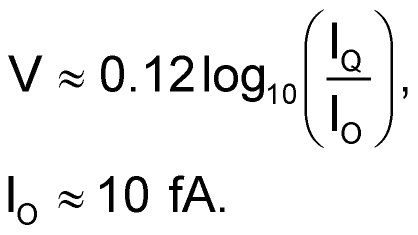Tachometry, the measurement of the speed of spin of rotating objects, is a common application. Some of those objects, however, have quirky aspects that make them extra interesting, even scary. One such category includes outdoor noncontact sensing of large, fast, and potentially hazardous objects like windmills, waterwheels, and aircraft propellers. The tachometer peripheral illustrated in Figure 1 implements optical sensing using available ambient light that provides a logic-level signal to a microcontroller digital input and is easily adaptable to different light levels and mechanical contexts.
Safe sensing of large rotating objects is best done from a safe (large) distance and passive available-light optical methods are the obvious solution. Unless elaborate lens systems are used in front of the detector, the optical signal is apt to have a relatively low-amplitude due to the tendency of the rotating object (propeller blade, etc.) to fill only a small fraction of the field of view of simple detectors. This tachometer (Figure 1) makes do with an uncomplicated detector (phototransistor Q1 with a simple light shield) by following the detector with a high-gain, AC coupled, logarithmic, threshold detector.
 |
|
| Figure 1. | Logarithmic contrast detection accommodates several decades of variability in available illumination. |
Q1’s photocurrent produces a signal across Q2 and Q3 that varies by ~500 µV pp for every 1% change in incident light intensity that’s roughly (e.g. neglecting various tempcos) given by:

This approximate log relationship works over a range of nanoamps to milliamps of photocurrent and is therefore able to provide reliable circuit operation despite several orders of magnitude variation in available light intensity. A1 and the surrounding discrete components comprise high gain (80 dB) amplification that presents a 5-Vpp square-wave to the attached microcontroller DIO pin.
Programming of the I/O pin internal logic for pulse counting allows a simple software routine to divide the accumulated count by the associated time interval and by the number of counted optical features of the rotating object (e.g., number of blades on the propeller) to produce an accurate RPM reading.
